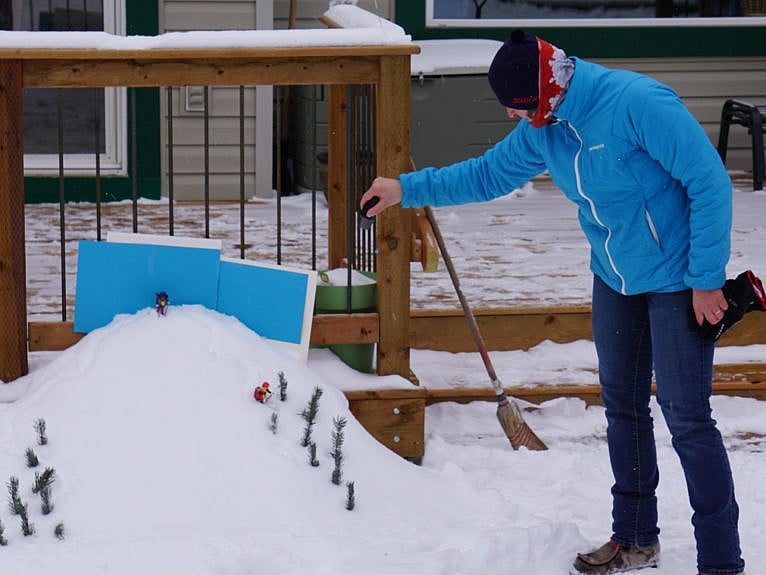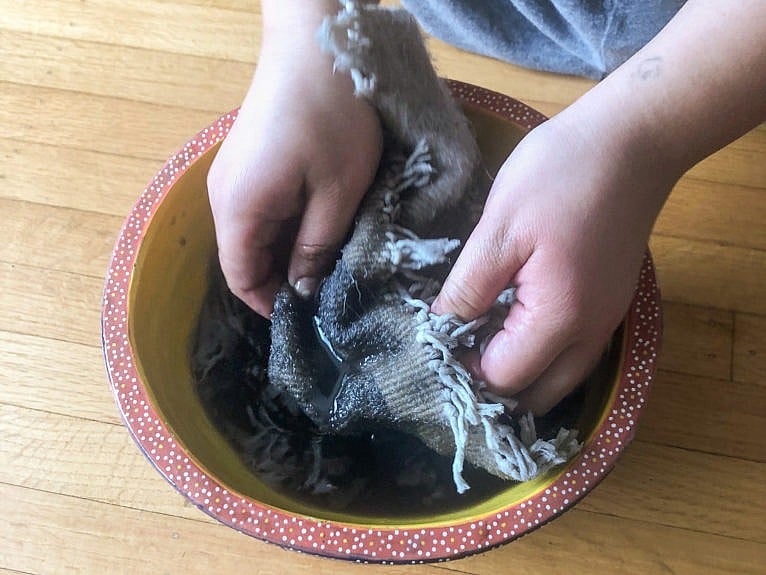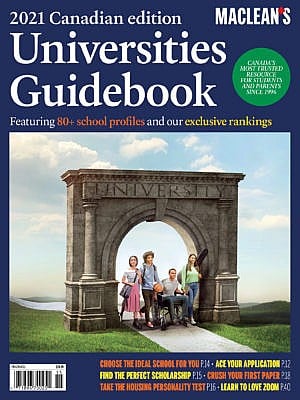More than virtual: How universities have embraced pandemic learning
Beyond the ‘pivot to virtual,’ Canadian universities have developed some pretty ingenious ways for students to learn and get to know each other

Emily Carr Associate Professor, Mimi Gellman created homemade, plant-material brushes made from found materials. (Mimi Gellman and Yaaz Pillay)
Share
2020 was a long year. It was a year of experimenting and getting used to new policies and procedures. Now, after roughly 12 months of operating under COVID restrictions, universities across Canada have the basics down. Most classes are offered virtually, and for those who do work or live on campus, physical distancing and masks are part of the routine.
But schools have also been inventive when it comes to pandemic learning. Maclean’s asked dozens of universities across the country to tell us how they’ve adapted and what students can expect to see in the coming months, both on and off campus.
Fresh perspective
Many virtual classes have been offered, with both synchronous (live streams) and asynchronous (pre-recorded lectures to be watched at any time) options, while classes that have to be attended in person have made use of physical distancing and safety equipment.

But faculty are starting to get more creative. Mount Saint Vincent University offered “boot camps” for some of their chemistry labs, which students could attend either virtually or on campus, that allowed them to complete large portions of their lab work in just a few days. At Mount Royal University, one professor used Playmobil figures to help teach an avalanche awareness course. Students in a painting class at Emily Carr University of Art + Design (ECU) were encouraged to raid their household cupboards and find unusual materials to work with; students painted with forks, whisks and boards, and mixed rice, oatmeal and even soil into their paint. Working from a home studio allowed both professors and students to expand their idea of how they were supposed to create art. “Our paintings become an extension of ourselves, of our lives,” ECU instructor Russna Kaur says. “I’m trying to provide [students] with tools they can not only use in class but outside of class, as well, to figure out what their narrative is; who are they as artists; who are they as people.”
Class subjects are also changing, with many schools introducing courses that revolve around COVID itself. Algoma University debuted a course called The Science of COVID, which looks at the psychological and ecological impacts of the virus, and another on the legal and political aspects of the pandemic.
Other schools have similarly introduced innovative courses, including the University of Toronto’s course Mind Control: Managing Your Mental Health During COVID-19.

Meet your match
Many universities have introduced pairing programs over the last year, where faculty and students are paired with incoming students to help them with classes, offer a chance to socialize and even provide a mental health check-in at a difficult time.
Programs like New Student Connect at the University of Victoria allow upper-year students to meet virtually with incoming students to answer questions, host events, and build clubs and teams to make the first year at university a little more fun. Dalhousie University has a similar program, Together@Dal, where upper-year students host interactive sessions with a group of new students to go over important information like study skills, preparing for exams and networking with others in their programs. Wilfrid Laurier, meanwhile, is offering a faculty mentorship program to help students adjust to a virtual learning environment.
Getting together
Academics are just one part of university life. Time on campus is also about joining clubs, finding people with shared interests and experimenting with new pastimes and hobbies. Even though most of that has to be done virtually these days, many schools are leaning into new ways of hanging out.
Wilfrid Laurier has moved many university club meetings online, with virtual conferences and guest speakers popping in to join the discussion. Activities like virtual game nights or movie nights, trivia and bingo, and even MasterChef-style competitions are being hosted online. For students missing the gym, Simon Fraser University is hosting online workouts and meditation classes, and Mount Allison University has created the Mounties Move program, which gives students and faculty free fitness consultations with a Mount Allison personal trainer or yoga instructor.
Schools themselves are working to make quarantine time a little less taxing. Many student unions and clubs have created care packages, delivered books or food, and are trying to make life easier for anyone isolating after travel. At Mount Allison, that’s translated to nearly 12,978 meals delivered, 620 loads of laundry washed and 1,252 snack bags put together—not too shabby. “These numbers represent an incredible amount of planning and support by Mount Allison staff, and really speak to the nature of our university and wider community, who regularly go above and beyond,” says Anne Comfort, acting vice-president, international and student affairs at Mount Allison University.
For many students, the biggest hurdle this year will be financial. Part-time jobs may be harder to sustain with COVID regulations, and the job market has shrunk in many industries. Schools such as Université de Montréal are providing bursaries for students in financial hardship. At Ontario Tech University, the Student Relief Fund has distributed nearly $400,000 to 1,600 students.
As the pandemic continues, vaccine distribution and shifting policies across the country make it impossible to predict exactly what comes next. But schools are working, in ways big and small, to make life and learning as easy as possible.

This article appears in print in the Maclean’s 2021 Canadian Universities Guidebook with the headline, “Creativity in the time of COVID.” Order a copy of the issue here. Subscribe to the monthly print magazine here.